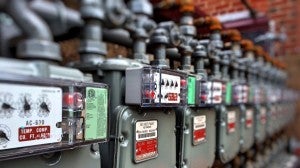
In response to the deadly natural gas explosion in San Bruno, California, the U.S. Pipeline and Hazardous Materials Safety Administration (PHMSA) is proposing new regulations to make pipelines safer. The regulations will go a long way toward safeguarding communities from the risks of natural gas explosions, but, if they’re done right, they could also protect the climate.
Natural gas is mostly methane – a potent climate pollutant, and reducing the amount of gas that leaks from pipelines also reduces emissions of methane. But there are aspects of the proposal that could result in an increase in methane emissions if proper action isn’t taken. The proposed safety measures require operators to conduct more testing to ensure that pipelines can handle high pressures of gas. Before this testing begins pipeline operators have to empty the pipes by blowing gas down the pipeline. Opponents to the rule say this would create a significant increase in methane emissions, but fortunately a recent study from a leading environmental consulting firm concluded otherwise. Read More










 Austin, my home for the past 35 years, is typically a pretty sunny place year-round. But summer is when I am reminded of the sun’s unwavering presence and strength.
Austin, my home for the past 35 years, is typically a pretty sunny place year-round. But summer is when I am reminded of the sun’s unwavering presence and strength. On June 20 and 21, temperatures across the Southwest
On June 20 and 21, temperatures across the Southwest  My head feels whipsawed by the wildly changing
My head feels whipsawed by the wildly changing 
 A ruptured natural gas pipeline in the quiet community of San Bruno, California ignited on the evening of September 9, 2010. The resulting fire destroyed 38 homes, killed eight people, and injured many others. It was one of the biggest pipeline explosions in recent history, and it very likely could have been prevented.
A ruptured natural gas pipeline in the quiet community of San Bruno, California ignited on the evening of September 9, 2010. The resulting fire destroyed 38 homes, killed eight people, and injured many others. It was one of the biggest pipeline explosions in recent history, and it very likely could have been prevented.